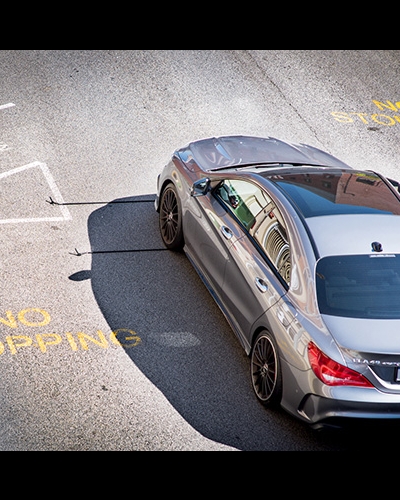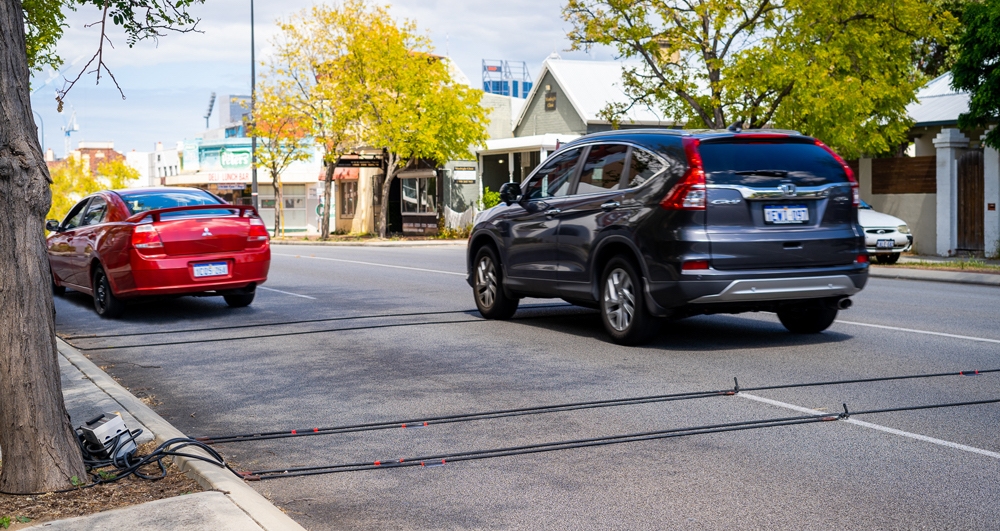ABSTRACT
Accurate traffic data are critical to support various transportation analyses, including monitoring the
performance of the transportation system, planning future services and facilities, developing operational
strategies, and designing new facilities. Several types of traffic counting technologies are available;
however, there is limited information available that compares the accuracy of the devices in terms of
volume and vehicle classification.
This study was performed to provide information that can be helpful to agencies that perform traffic data
collection. The main purpose of this study is to evaluate the performance of commonly used traffic data
collection systems within the Fargo-Moorhead metropolitan area. Two case study locations were used for
the evaluation, which consisted of a two-lane arterial and a four-lane arterial. This study has two main
objectives: 1) determine the accuracy of selected traffic counting devices in capturing actual vehicular
flows, and 2) determine the accuracy the detection devices are at classifying observed vehicular traffic.
The classification comparisons were performed by grouping the 13 FHWA vehicle classes into four
categories: 1) passenger vehicles, 2) single unit trucks, 3) single combination trucks, and 4) multi-trailer
tucks.
This study initially planned on evaluating five traffic collection devices, including the Traffic Tally 6 (TT-6),
MetroCount 5600, Jamar’s TRAX RD, HI-STAR, and AutoScope 2004-ID. However, due to erroneous
data due to device defects and environmental factors, the HI-STAR and Autoscope devices were
eliminated from the study.
The first test, which was performed on a two-lane arterial, determined that the Jamar and MetroCount
devices were slightly more accurate in terms of traffic volume when only one lane of the two-lane arterial
was monitored. The Jamar device experienced inaccuracies of 1.5% (2 lanes) and 0.0% (1 lane), while
the MetroCount devices had inaccuracies of 0.0% and 0.3% (2 lanes) and 0.0% and 0.0% (1 lane). The
TT-6 device was not as accurate as the other two devices, producing inaccuracies of 31.6% and 14.5%.
The classification accuracy of the Jamar and MetroCount devices was also influenced by the number of
lanes monitored. In terms of the total vehicles, the Jamar device incorrectly classified 12.6% (2 lanes) and
3.2% (1 lane). The MetroCount devices incorrectly classified 8.0% (2 lanes) and 1.9% (1 lane).
Both devices were very accurate in classifying passenger vehicles, while the three truck classes incurred
higher inaccuracies. When comparing passenger vehicles, the Jamar device incorrectly classified 5.3% (2
lanes) and 0.7% (1 lane), while the Metrocount device incorrectly classified 1.1% (2 lanes) and 0.7% (1
lane). In terms of the truck accuracy, the Jamar device incorrectly classified 33.3% (2 lanes) and 26.6% (1
lane), while MetroCount device incorrectly classified 51.1% (two lane) and 17.8% (1 lane).
The second test site evaluated the accuracy of the devices along a four-lane arterial. According to the
results, the Jamar and MetroCount devices did not perform as well compared to the first test. The volume
differences for the Jamar and MetroCount devices were 9.5% and 3.0%, respectively. On the other hand,
the TT-6 performed better at the second test site, recording a 7.3% volume difference.
The classification accuracy of the Jamar and MetroCount devices was also hindered due to two travel
lanes. The total number of vehicles incorrectly classified with the Jamar device was 35.0%, while the
MetroCount Device incorrectly classified 6.3%. Based on the net total among passenger vehicles, the
Jamar and MetroCount devices incorrectly classified 25.6% and 2.4%, respectively. In terms of the three
truck classes, Jamar incorrectly classified 167.3% of the vehicles, while MetroCount incorrectly classified
61.8% of the vehicles.
Got a great MetroCount story? Share it with us and let the world know the great work you're doing in your community.

